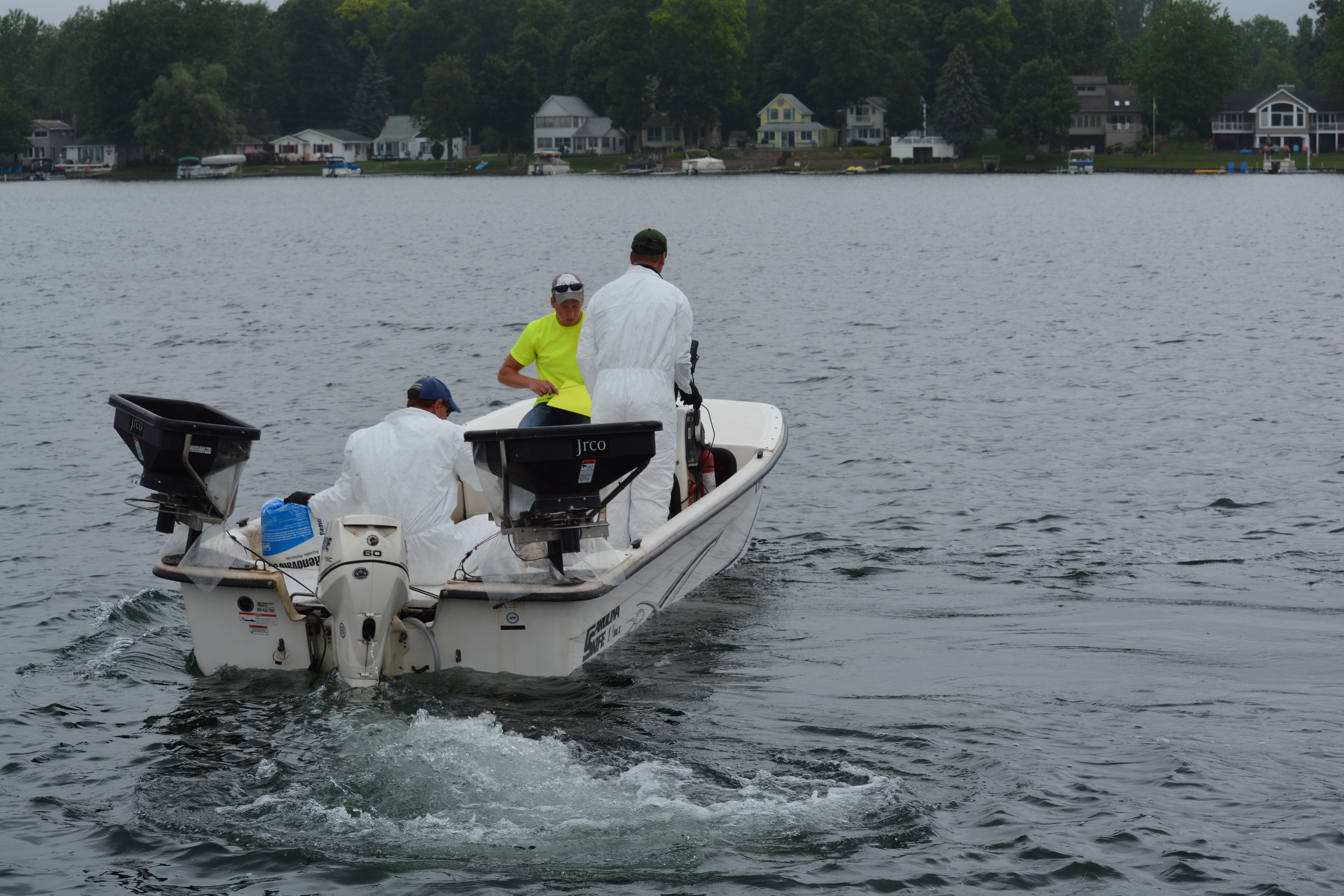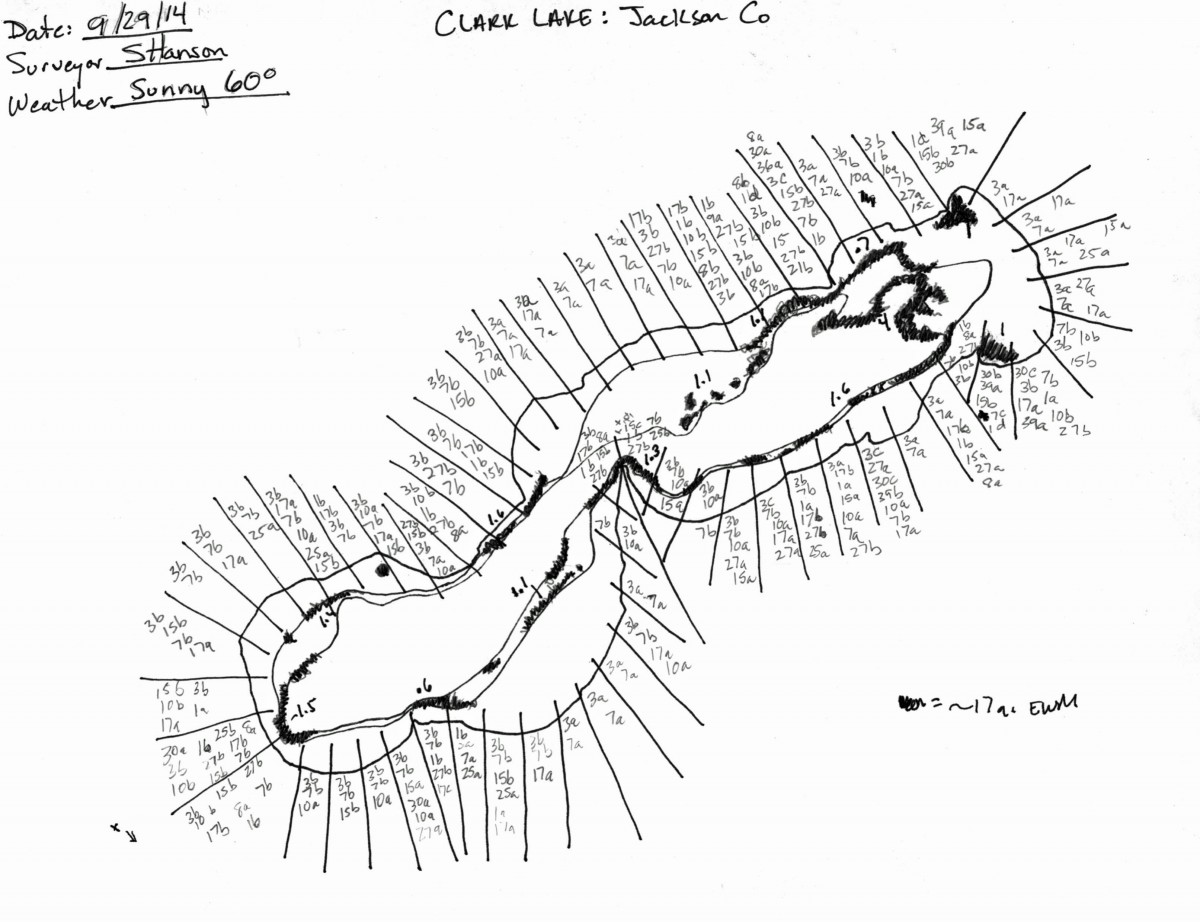Clark Lake has been invaded by hybrid Eurasian water milfoil (HEWM). This invasive weed spreads quickly, and where unchecked, can create huge problems.
Because a Special Assessment District (SAD) has been established, treatment of this weed will take place wherever it is found in the lake, typically in waters up to 20 feet deep. The initial treatment this season is tentatively scheduled for the week of May 16th. For treatment to be effective, it must occur when the weeds are actively growing. So before treatment begins, the lake will be inspected to determine if the plants are mature enough. Once the HEWM is present and growing, Professional Lake Management (PLM) will map the beds with GPS and target those areas for treatment for the week of May 16th. PLM will send a notice to all residents with the treatment schedule in the next couple of weeks.
There may be a need for follow up spot treatments for stubborn patches later in the season. Those tentative dates are for the weeks of June 13, July 18, and August 18.
Establishing the SAD was the culmination of a year-long drive by Clark Lake residents to stiffen the fight against this invasive weed. When DNA testing confirmed its presence in the lake and a survey in fall 2014 revealed about 20 acres in the lake, these residents formed the Clark Lake Invasive Species committee. They quickly came face-to-face with an ugly truth–lakes that did not check the spread of HEWM found that it curtailed recreational activities, destroyed wildlife habitat, and hurt property values. The SAD will allow treatment wherever the weed is found in the lake. The SAD also supports the cost of the treatment through a $64.42 per year assessment to owners of each lakefront property.
Through private donations to the Clark Lake Spirit Foundation, four areas of the lake were treated early last summer. PLM performed the treatment with a permit from the DEQ and with the consent of property owners. Because of the limitation of property owner rights, the areas treated stopped at 250 feet from shore. HEWM grows in waters of up to 20 feet deep, and there is a lots of it beyond 250 feet. The SAD addresses this limitation.
The Clark Lake Invasive Species Committee consists of Clark Lake volunteers who researched the problem thoroughly and concluded the only way to deal with HEWM was by the application of approved herbicides. They then took the message door to door, held a public information hearing in December 2014, and last spring started a petition drive to create the SAD. All along the way, progress was reported in detail on this website. At the first public hearing in August 2015, committee chairman John Deming told the trustees and the audience about community response. “In taking the SAD concept to residents, the committee found overwhelming support–95% of lakefront property owners contacted by the committee signed the SAD petition.” The committee delivered to the township petitions signed by 74% of the lakefront owners. Columbia Township trustees passed the SAD resolution unanimously.
For a comprehensive review of the research, process and results, please click here or go to the Invasive Weeds tab on this website.













